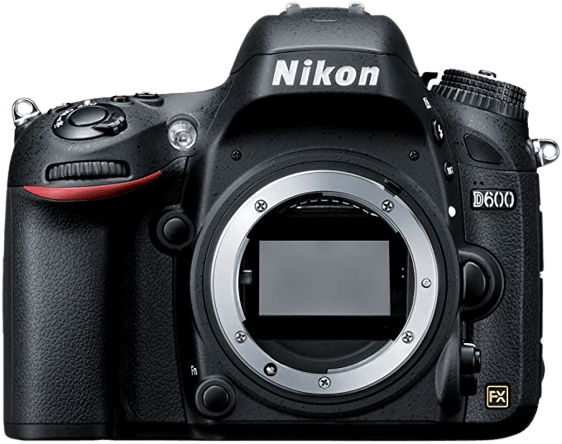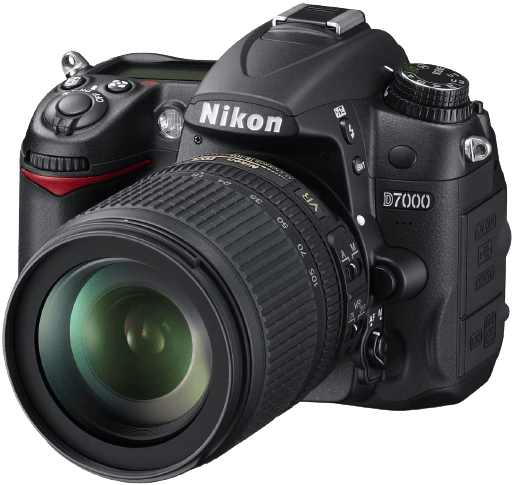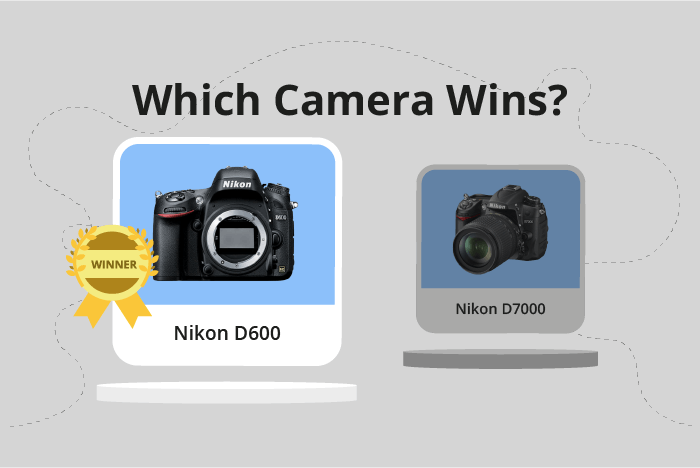Nikon D600 vs D7000 Comparison
Nikon D600

Nikon D7000

The Nikon D600 outperforms the Nikon D7000 with a score of 66/100 compared to 56/100. Both cameras are DSLR models, released in 2012 and 2010 respectively. As expected, they share some specifications, such as camera type and similar dimensions.
The D600 excels with a higher score, larger size (141 x 113 x 82mm), and heavier weight (850g). These features may contribute to its sturdiness and improved performance.
On the other hand, the D7000 has a smaller size (132 x 105 x 77mm) and lighter weight (780g), making it more portable and easier to handle. Its lower launch price of $1200 also makes it a more affordable option for budget-conscious photographers.
Taking all these factors into account, the Nikon D600 proves to be the better camera with its higher score and enhanced specifications. However, the Nikon D7000 remains a viable option for those seeking a more compact and budget-friendly DSLR.
Nikon D600 vs D7000 Overview and Optics
The Nikon D600 outperforms the Nikon D7000 in optics with a score of 70/100 compared to the latter’s 55/100. Both cameras have some similarities in their optics, including the CMOS sensor type, the Nikon F lens mount, and the absence of image stabilization.
The D600’s superiority in optics is evident in its higher megapixel count of 24.3, compared to the D7000’s 16.2. This allows the D600 to capture more detail and produce higher-resolution images. Furthermore, the D600 has a more advanced Expeed 3 processor, which improves image quality and processing speed. The full-frame sensor of the D600 also contributes to its better performance, as it captures more light and produces images with less noise than the D7000’s APS-C sensor. The D600’s sensor also boasts a higher DXOMARK score of 94, indicating its ability to produce high-quality images in various lighting conditions.
On the other hand, the D7000 does have a slight advantage in shooting speed, as it can capture 6 frames per second compared to the D600’s 5.5. This can be beneficial for photographers who need to capture fast-moving subjects, such as sports or wildlife.
Taking these factors into account, the Nikon D600 is the clear winner in terms of optics, offering a higher resolution, better image quality, and improved low-light performance. The D7000’s advantage in shooting speed may be useful in certain situations, but it does not outweigh the overall superiority of the D600’s optics. Therefore, those looking for a camera with better optical performance should opt for the Nikon D600.
Nikon D600 vs D7000 Video Performance
The Nikon D600 and Nikon D7000 both received a video score of 57/100, indicating that their video capabilities are equally matched. These cameras share common video specifications, including Full HD video resolution and maximum video dimensions of 1920 x 1080. Additionally, both cameras have built-in time-lapse functionality, providing photographers with creative options for capturing videos.
The Nikon D600 has a slightly higher maximum video frame rate at 30fps, compared to the Nikon D7000’s 24fps. The higher frame rate allows for smoother video playback and is an advantage when recording fast-moving subjects or action scenes. This feature makes the D600 a better choice for users who prioritize smooth video quality.
On the other hand, the Nikon D7000’s maximum video frame rate of 24fps is still suitable for general video recording purposes. While the lower frame rate may result in slightly less smooth playback, it is still capable of producing quality videos. Additionally, some users may prefer the more cinematic look that 24fps can provide, making the D7000 a suitable option for those who value this aesthetic.
Both the Nikon D600 and Nikon D7000 offer strong video capabilities with their Full HD resolution, 1920 x 1080 video dimensions, and time-lapse functionality. The D600’s higher maximum video frame rate of 30fps provides smoother video playback, while the D7000’s 24fps may appeal to users who prefer a more cinematic look. Ultimately, the choice between these two cameras will depend on the individual user’s preferences and priorities in video recording.
Nikon D600 vs D7000 Features and Benefits
The Nikon D600 outperforms the Nikon D7000 in features with a score of 57/100 compared to the latter’s 54/100. Both cameras share several specs, including a screen resolution of 921,000 dots, lack of touchscreen, flip screen, GPS, and Bluetooth capabilities. Additionally, both cameras come equipped with WIFI functionality.
The D600 excels with its larger screen size of 3.2 inches, providing a more comfortable viewing experience compared to the D7000’s 3-inch screen. This advantage allows photographers to review their shots more easily and make necessary adjustments to their settings. The D600’s higher feature score is a testament to its superiority in this aspect.
However, the D7000 is not without its merits. Although it has a smaller screen size, the camera’s performance in other areas remains competitive with the D600. Its feature score of 54/100 is only marginally lower than the D600’s, indicating that the D7000 still provides a solid user experience despite its smaller screen.
Considering the features of both cameras, the Nikon D600 emerges as the better option due to its larger screen size, which enhances the overall user experience. The Nikon D7000, while still a capable camera, falls short in this regard. However, it is important to note that the difference in feature scores is relatively small, suggesting that the choice between these two cameras may ultimately come down to personal preference and the specific needs of the photographer.
Nikon D600 vs D7000 Storage and Battery
Both cameras share similarities in their storage and battery specifications, such as accepting SD, SDHC, and SDXC memory cards, using the EN-EL15 battery type, and lacking USB charging capabilities. The dual memory card slots allow for more storage and flexibility when shooting. This feature is beneficial for photographers who need to switch between different memory cards during a shoot or want to separate RAW and JPEG files.
The D7000 has a longer battery life, with 1050 shots per charge compared to the D600’s 900 shots. This gives the D7000 an edge for photographers who need extended shooting time without replacing or recharging batteries. Of course, each camera has its merits, and the choice ultimately depends on the photographer’s priorities and needs.
Nikon D600 vs D7000 – Our Verdict
Are you still undecided about which camera is right for you? Have a look at these popular comparisons that feature the Nikon D600 or the Nikon D7000:

